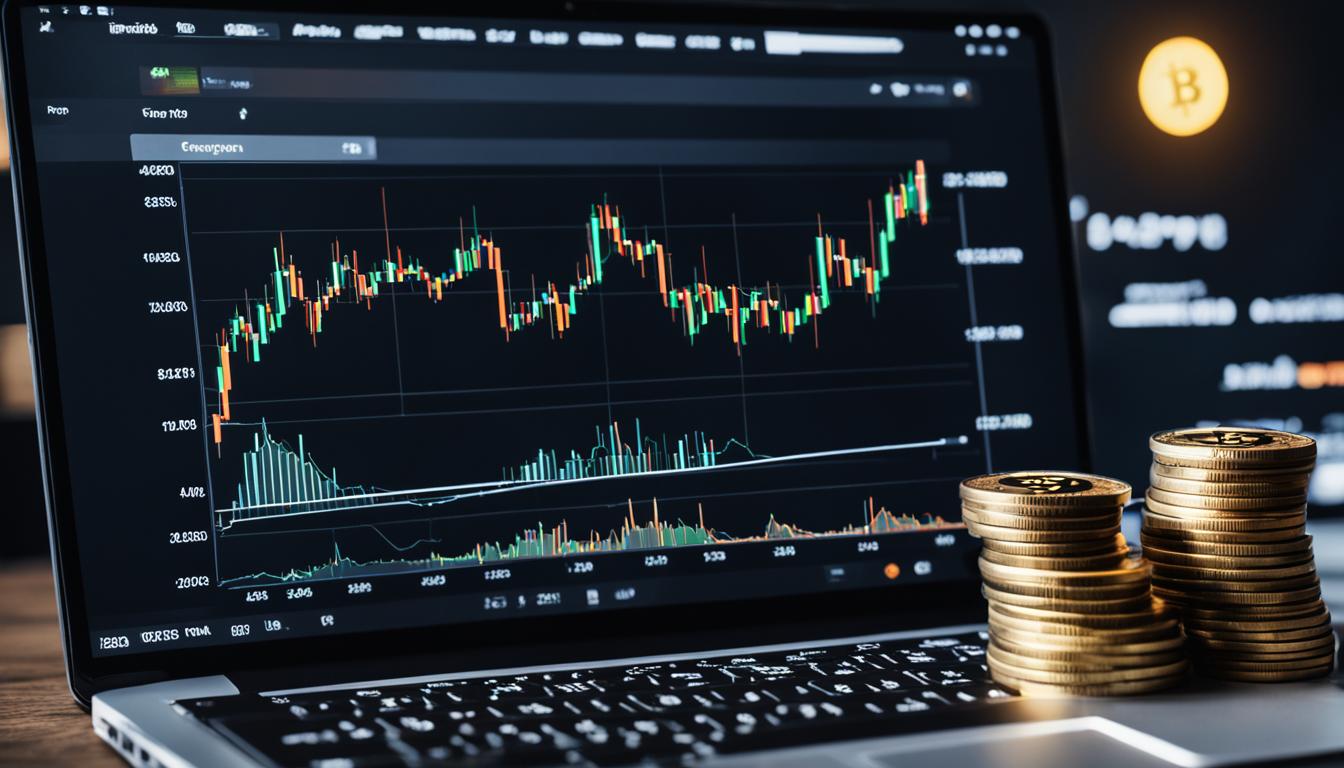When it comes to cryptocurrency trading, investors have the option to engage in leveraged trading, which allows them to trade larger positions by using borrowed funds. This practice, commonly known as trading on margin, can offer opportunities for higher returns, but it also comes with its own set of risks. One such risk is the possibility of receiving margin calls.
A margin call occurs when the equity in an investor’s margin account falls below the required amount set by the broker. This usually happens when the value of the securities held in the account decreases. To cover a margin call, investors have a few options. They can choose to deposit additional funds or marginable securities into their account or sell some of the assets in their account.
It is crucial for investors to monitor their equity and maintain sufficient funds in their account to avoid margin calls. Failure to do so may result in the forced liquidation of positions, which can lead to significant losses. In this article, we will explore the concept of leveraged trading, margin calls, and how investors can manage these risks effectively.
Key Takeaways:
- Leveraged trading allows investors to trade larger positions by using borrowed funds.
- Trading on margin comes with the risk of receiving margin calls when the equity in an investor’s account falls below the required amount.
- Investors can cover margin calls by depositing additional funds, marginable securities, or selling assets in their account.
- It is crucial to monitor equity and maintain sufficient funds in the account to avoid margin calls and potential losses.
- Proper risk management strategies can help investors mitigate the risks associated with leveraged trading.
Understanding Margin and Leverage in Cryptocurrency Trading
When it comes to cryptocurrency trading, understanding how margin and leverage work is crucial. Margin is the collateral that investors deposit with their broker to cover the credit risk. It allows traders to open positions that are larger than their account balance. Leverage, on the other hand, is the ratio of the size of the position to the investment required. It amplifies both gains and losses.
Trading with margin and leverage offers the potential for significant profits. However, it also comes with substantial risks. If the market moves against traders, they can potentially incur substantial losses. That’s why it’s essential to calculate the margin required for each trade based on the leverage limit set by the broker.
Investors must also be aware of margin maintenance requirements. If the equity in their account falls below the minimum margin requirement, they may face margin calls. Margin calls require traders to deposit additional funds or sell assets to cover the deficit.
It is crucial to approach margin trading with caution. While it can magnify gains, it can equally amplify losses. Traders should carefully assess their risk appetite and only use margin and leverage after thorough consideration and risk management.
Managing Risks and Avoiding Margin Calls in Cryptocurrency Trading
To successfully navigate trading on margin in the cryptocurrency market, it is crucial for investors to implement effective risk management strategies. By understanding and proactively managing the risks involved, investors can minimize the likelihood of margin calls and protect their capital.
One important risk management tool is the use of stop loss orders. Placing stop loss orders allows investors to set a predetermined price at which their position will automatically be sold, limiting potential losses. By having stop loss orders in place, investors can mitigate the impact of market volatility and protect themselves from significant downside risks.
“Stop loss orders are a vital tool for risk management in cryptocurrency trading. They provide a level of protection by automatically executing a trade when the price reaches a certain predetermined level, helping investors limit losses and manage their risk exposure.”
Additionally, maintaining leverage at manageable levels is crucial in risk management. While leverage can amplify potential profits, it also magnifies losses. By keeping leverage ratios within reasonable limits, investors can maintain better control over their positions and reduce the risk of margin calls.
Borrowing against a diversified portfolio can also help reduce the probability of a margin call. By spreading investments across different assets, investors can minimize the impact of a potential decline in one specific asset’s value. Diversification provides a level of protection, ensuring that investors have a safety net even if one particular asset underperforms.
Monitoring open positions, equity, and margin loan on a regular basis is essential to staying on top of market movements and potential risks. By actively tracking these factors, investors can make informed decisions and take proactive actions to avoid margin calls.
Creating alerts at a comfortable level above the margin maintenance requirement is another recommended risk management practice. By setting up alerts, investors can receive notifications when their account’s equity approaches critical levels. This empowers investors to take timely action, such as depositing additional funds or adjusting their positions to prevent margin calls.
Furthermore, ensuring that sufficient cash and securities are available in the account is important. By maintaining adequate funds, investors can meet margin requirements and reduce the likelihood of a margin call. Consider keeping cash in an interest-earning account at the same brokerage to meet margin requirements while maximizing potential returns.
By employing these risk management techniques, investors can navigate the complexities of cryptocurrency trading on margin with greater confidence and reduce the risk of margin calls, promoting long-term success in the market.

Conclusion
Cryptocurrency trading with leverage and margin calls offers both lucrative opportunities and potential risks. The use of leverage allows investors to amplify their profits, but it also opens the door to amplified losses. Therefore, it is crucial for investors to have a solid understanding of margin requirements and the associated risks in margin trading.
Effective risk management strategies play a vital role in mitigating the likelihood of margin calls and protecting investors’ capital. Regular monitoring of positions, equity, and margin loan levels allows for proactive decision-making and the ability to take timely actions. Employing stop loss orders to limit losses and maintaining leverage at reasonable levels are essential risk management practices.
Prior to engaging in leveraged trading in the cryptocurrency market, investors must carefully evaluate the potential risks and rewards. It is necessary to comprehensively assess one’s risk tolerance, financial capability, and market knowledge. By doing so, investors can make informed decisions and ensure that they are well-prepared for the volatile nature of the cryptocurrency market.
FAQ
What is leveraged trading in cryptocurrency?
Leveraged trading allows investors to trade larger positions in the cryptocurrency market by using borrowed funds. It is also known as trading on margin.
What are margin calls in cryptocurrency trading?
A margin call occurs when the equity in an investor’s margin account falls below the required amount set by the broker. It typically happens when the value of the securities held in the account decreases. Investors must take action to cover the margin call by depositing additional funds or marginable securities or selling some of the assets in their account.
How does margin work in cryptocurrency trading?
Margin is the collateral that an investor must deposit with their broker to cover the credit risk. It enables investors to open positions larger than their account balance. Leverage, on the other hand, is the ratio of the size of the position to the investment required. It amplifies both gains and losses. Traders need to calculate the margin required for each trade based on the leverage limit set by the broker and be cautious as they can potentially incur significant losses if the market moves against them.
What are some risk management strategies for margin trading in cryptocurrency?
To manage risks associated with trading on margin, investors can utilize strategies such as placing stop loss orders to limit losses and keeping leverage at manageable levels. By borrowing against a diversified portfolio, investors can reduce the probability of a margin call. Regularly monitoring open positions, equity, and margin loan is also crucial, and creating alerts at a comfortable level above the margin maintenance requirement can help investors avoid margin calls. Furthermore, having sufficient cash and securities in the account and keeping cash in an interest-earning account at the same brokerage can help meet margin requirements.
What should I be aware of when trading with leverage and margin in cryptocurrencies?
Trading with leverage and margin in cryptocurrencies can be both rewarding and risky. While leverage allows investors to maximize their profits, it also amplifies losses. It is important to have a good understanding of margin requirements, maintenance levels, and the risks associated with margin trading. By implementing proper risk management strategies and monitoring positions regularly, investors can minimize the likelihood of margin calls and protect their capital. Assessing potential risks and rewards before engaging in leveraged trading is crucial.
Source Links
- https://www.investopedia.com/terms/m/margincall.asp
- https://www.investopedia.com/terms/m/margin.asp
- https://www.oanda.com/us-en/learn/introduction-to-leverage-trading/what-is-margin-in-trading/
- Technical Analysis in Crypto: Master the Art of Cryptocurrency Trading - October 1, 2024
- Fundamental Analysis for Crypto - September 30, 2024
- Day Trading vs. Long-Term Investing: Understanding the Dynamics of Cryptocurrency Trading - September 28, 2024






